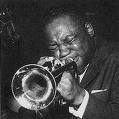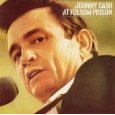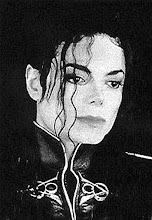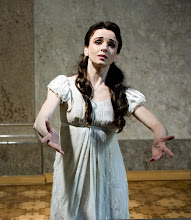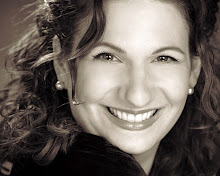 |
| Alex Lifeson doing his thing at the 2003 SARS Festival in Toronto |
You may recall a prior post recently involving a lengthy interview with the guitarist of Rush...well here's another interview with Alex Lifeson.
While it's over a week old (came out on 12/11), Big Al always gives an interesting and insightful interview.
This is the work of Greg Prato at UGO Music Blog.
It’s no secret that over the years Rush has had its fair share of detractors - namely, in the music press. But the veteran Canadian group - which has long consisted of singer/bassist Geddy Lee, guitarist Alex Lifeson, and drummer/lyricist Neil Peart - certainly has gotten the last laugh, as they are still scoring hit albums and selling out arenas worldwide, nearly 35 years after the release of their self-titled debut. Recently, Rush has issued their latest live DVD, Snakes & Arrows Live, which chronicles a pair of sold-out shows at the Ahoy Arena in Rotterdam, Netherlands, on October 16 and 17, 2007, and features a heaping helping of classics, album cuts not played in eons, and newer material. Lifeson recently gave UGO the scoop about the DVD, as well as Rush’s future plans.
Let’s start with the new DVD, Snakes & Arrows Live...
Alex Lifeson: Well, towards the end of the [2007 European] tour, in Rotterdam, we had two days there - we had a day off before and a day off after. So it allowed us to get in on a set-up date, and having the second date, gave us the opportunity to get some really cool long shots and crowd shots. I think we had a fourteen-camera set-up - shot all in HD. It sounds really, really good. It’s funny with us - we always wait until the last minute to do these things, and I don’t know why we do that. We would probably be better off to think about doing something earlier in the tour. But it always turns out this way. Actually, one of the advantages is we’re pretty confident with our playing and the set feels pretty good. We’re quite pleased with it.
Why didn’t the DVD come out at the same time as the Snakes & Arrows CD (which was released in April)?
Alex Lifeson: The CD came out just prior to us going back out on the road - it gave us a little boost I think, in terms of making everybody aware that we were going back out for the second half of the tour. But these things take a while. To do the 5.1 mix is always time-consuming. So, we were able to get a stereo mix out quite easily.
 How would you say that particular tour compared to others - as far as the band’s playing?
How would you say that particular tour compared to others - as far as the band’s playing?
Alex Lifeson: I think we played the best we’ve ever played. As we get older - as we “mature” - there is a newfound confidence in our playing and the way we approach what we do. I thought we were really settled night-to-night - tempos were very consistent throughout the whole tour. You’re always making little improvements sonically. And there was a really good crispness and clarity to the sound - both out in the house as well as in internally in our monitors. And that always gets you playing a lot better. It was really night-to-night very settled - not often do I feel that way, or any of us feel that way. You come off a tour, and you figure you’ve done a dozen shows where you feel you played really well. This was night-to-night - we felt really confident and really good about the shows.
What about standout memories of that particular performance that night in Rotterdam?
Alex Lifeson: It was a very relaxed night - which is unusual, for that kind of “pressure” night. Whenever we’re recording, there’s always a sense of tension on stage. But we were really relaxed that night, and I think it was because we had the two nights. We were in the European portion - halfway through it - and we really enjoy traveling through Europe, so we were all in a pretty good headspace and relaxed. And I think it shows - there are moments throughout the DVD where there is interplay between the three of us and the audience - and you sense that we’re having fun.
 Over the past few tours, Rush has brought back songs that have rarely been played live. How was it playing songs such as “Digital Man,” “Entre Nous,” and “Mission” again?
Over the past few tours, Rush has brought back songs that have rarely been played live. How was it playing songs such as “Digital Man,” “Entre Nous,” and “Mission” again?
Alex Lifeson: It was fantastic. To play those songs that we hadn’t played before - or in a long time - was really nice. And the reaction from the crowd was great. I think Rush fans really enjoyed hearing some of those things that you don’t normally hear. On the second half of the tour, we switched things around a little bit and brought in some other ones - “Ghost of a Chance,” for example, and that exists on the DVD, as well. It’s almost like a bootleg session on the DVD, so there’s a nice variety there. And then all the “comedy stuff” that we try to do between the songs and at the opening and closing of the show is really fun, and there are some outtakes from those film sessions. It gives a whole different perspective on us and the individuals in the band.
Any obscure songs that you’d like to see make their way into the set in the future?
Alex Lifeson: I’m always toying with that idea - of really doing a tour, or a set, of more obscure stuff. Kind of stay away from “Tom Sawyer” and “The Spirit of Radio,” and explore some more obscure songs. I think the thing with us is, it’s “An Evening With,” and these are Rush fans that are there to see us play, and I think we can play just about anything we’ve written, and it would be accepted and there would be great interested in it. It would be really great to play those songs - for us to go on tour and play material that we haven’t played in 20 or 30 years...or ever. It would be a different tour, and something I hope we’ll consider seriously. It would be really interesting for us, I think. Playing “Ghost of a Chance” live, I felt like the song was reborn. There was a power, intensity, and dynamics to the song, that don’t come across quite the same as the recorded version. And when you play it now - or any of these older songs - we attack it differently. It’s kind of cool.
 Looking back on the early years, I’ve read that Rush toured with Kiss in 1975.
Looking back on the early years, I’ve read that Rush toured with Kiss in 1975.
Alex Lifeson: That was our first kind of “big tour.” We had started touring in ‘74 - we were opening for a few different bands. But the Kiss tour...and this was the start of their career, as well. The tour that we did with them, we opened for them, and we were playing 3,000-5,000 seat halls. They were a new band, and no one had really heard of them. So we did a lot of work with them - we probably toured with them for 60 or 70 shows. Back in those days, we were doing 200 to 250 shows a year anyways. But we toured with them over a fairly long period of time. We were very close and we had a lot of fun. We were both young bands, and quite different from each other - I think that was a nice compliment playing together. But like a lot of things, you sort of drift apart over the years. We stayed in touch for a while, but not so much in the past ten years or so.
Any specific memories of that tour?
Alex Lifeson: It was always a crazy scene at the end of tours - they’d plaster us with cream pies, there was always some sort of surprise lurking around a corner! And certainly, there were some fun nights - parties and things like that. They lived a little more of a “rock n’ roll lifestyle” than we did.
 |
| Big Al with a favorite axe |
I’ve noticed in recent years, you’ve made the jump back to Gibson guitars - what prompted that switch?
Alex Lifeson: I just felt like a change, to be honest - it came down to that. I didn’t have any problem with what I was using - I was using primarily Paul Reed Smith guitars before - and I’ve always said that I love those guitars, they’re so beautifully built. But there’s something about a Les Paul in particular that’s so classic and traditional. I just felt that I wanted to go back to that place. I started working with Gibson, and they were very open and helpful - in developing the things I wanted, and worked very closely with Pat Foley at Gibson. I’ve been very happy with that relationship. We’ve been working on some models that have been inspired that some of the guitars that I have and some of the needs that I have. So it’s been a pretty good relationship with them of late.
I’ve also heard that you’re a big fan of the TV show ‘Family Guy.’ Is this true, and which other shows are your favorites?
Alex Lifeson: Oh, everybody watches ‘Family Guy’! It’s become so popular. What else do I watch… jeez, my wife and I started watching ‘Boston Legal’ for some reason - the first season, and really liked the writing. So we got the whole series and we’ve been watching it. ‘Dexter’ I enjoy quite a bit. I just got a Blu-ray player, so I’m building up my collection of Blu-ray discs, and watching a lot of that stuff. I got that ‘Planet Earth’ series - it’s just so stunning! And I got a series on dinosaurs that I watch with my grandson. ‘When We Left Earth,’ some IMAX stuff.
Recently, Rolling Stone featured the band in its magazine - how does it feel to be embraced all these years later by magazines and media that were once not so kind to the band?
Alex Lifeson: That’s nice, it’s a nice compliment. It was nice to do the interview for that - the writer was really a very pleasant guy and smart. We spent the better part of a week during rehearsals, and Chris [Norris] got into different aspects of our lives - I thought he did quite a good job. We didn’t have a very good relationship with Rolling Stone for a long time, so it was nice to be over that, and we couldn’t even remember why it was like that in the first place. Maybe it’s because we’ve been around for as long as we’ve been, and we’re still at it, and we like to think of ourselves as a “vital” kind of a band. We don’t do these nostalgia tours - there’s nothing wrong with that, but that’s not for us. I think begrudgingly, a lot of these non-supporters give us a little bit of respect for sticking around for so long.
 What are Rush’s future plans? A new studio album?
What are Rush’s future plans? A new studio album?
 If you know anything about the musical philosophies of Mick Jagger and Keith Richards, a.k.a. the "Glimmer Twins" and the songwriting team behind the Rolling Stones, you might be amazed the band has lasted as long as it has.
If you know anything about the musical philosophies of Mick Jagger and Keith Richards, a.k.a. the "Glimmer Twins" and the songwriting team behind the Rolling Stones, you might be amazed the band has lasted as long as it has. As the Stones entered the 1980s, these differences in musical philosophy -- in addition to a different philosophy of how to spend their time in their personal lives -- began to create a deepening rift between the two. As a result, the quality of output from the Stones in that decade suffered greatly...it got so bad that nearly all the material from 1986's Dirty Work was written independently, and even in some cases vocals and guitars were recorded in separate studios.
As the Stones entered the 1980s, these differences in musical philosophy -- in addition to a different philosophy of how to spend their time in their personal lives -- began to create a deepening rift between the two. As a result, the quality of output from the Stones in that decade suffered greatly...it got so bad that nearly all the material from 1986's Dirty Work was written independently, and even in some cases vocals and guitars were recorded in separate studios. 





















